I'm having trouble getting ggplot to plot a rectangle covering a length of time on my plot, say from 6 AM to 12 PM.
I've been studying this question:
Plotting rectangles in ggplot2 - Invalid input: time_trans works with objects of class POSIXct only
But, for the life of me, I can't figure out why my example doesn't work and theirs does! I think I'm missing something very trivial, but this code:
library(ggplot2)
Example <- structure(list(Activity = c(0, 4, 7), LDT = structure(c(1456293600,
1456301700, 1456353300), class = c("POSIXct", "POSIXt"), tzone =
"Canada/Eastern")), .Names = c("Activity", "LDT"), class = "data.frame",
row.names = c(1L, 10L, 67L))
Time <- data.frame(xmin = as.POSIXct("20160224060000",
format = "%Y%m%d%H%M%S", tz = "Canada/Eastern"),
xmax = as.POSIXct("20160224120000",
format = "%Y%m%d%H%M%S", tz = "Canada/Eastern"))
ggplot(Example, aes(LDT, Activity)) +
geom_point() +
geom_rect(data = Time, aes(xmin = xmin, xmax = xmax, ymin = -Inf, ymax = Inf))
Results in the error, Error in eval(expr, envir, enclos) : object 'LDT' not found
When I check the structure of both data.frames, everything is nicely formatted as POSIXct. What am I doing wrong?
str(Example)
'data.frame': 3 obs. of 2 variables:
$ Activity: num 0 4 7
$ LDT : POSIXct, format: "2016-02-24 01:00:00" "2016-02-24 03:15:00" ...
str(Time)
'data.frame': 1 obs. of 2 variables:
$ xmin: POSIXct, format: "2016-02-24 06:00:00"
$ xmax: POSIXct, format: "2016-02-24 12:00:00"
